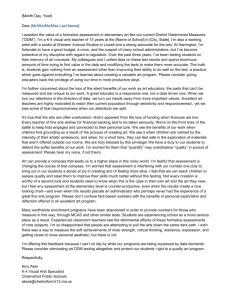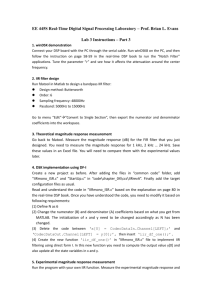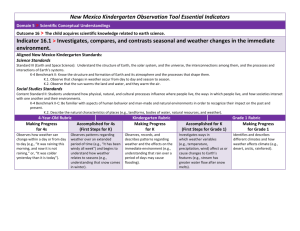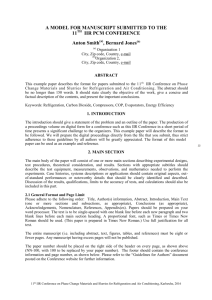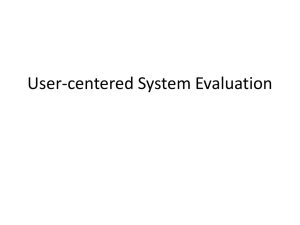Louisiana English Language Arts Content Standards and Benchmarks
advertisement
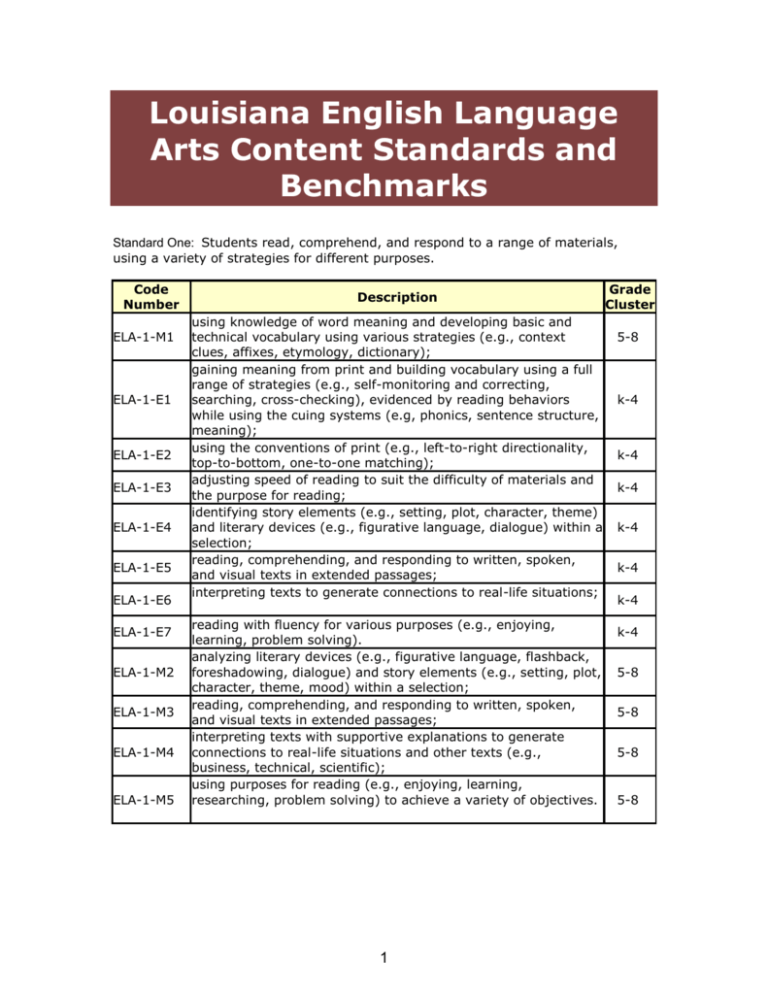
Louisiana English Language Arts Content Standards and Benchmarks Standard One: Students read, comprehend, and respond to a range of materials, using a variety of strategies for different purposes. Code Number ELA-1-M1 ELA-1-E1 ELA-1-E2 ELA-1-E3 ELA-1-E4 ELA-1-E5 ELA-1-E6 ELA-1-E7 ELA-1-M2 ELA-1-M3 ELA-1-M4 ELA-1-M5 Description using knowledge of word meaning and developing basic and technical vocabulary using various strategies (e.g., context clues, affixes, etymology, dictionary); gaining meaning from print and building vocabulary using a full range of strategies (e.g., self-monitoring and correcting, searching, cross-checking), evidenced by reading behaviors while using the cuing systems (e.g, phonics, sentence structure, meaning); using the conventions of print (e.g., left-to-right directionality, top-to-bottom, one-to-one matching); adjusting speed of reading to suit the difficulty of materials and the purpose for reading; identifying story elements (e.g., setting, plot, character, theme) and literary devices (e.g., figurative language, dialogue) within a selection; reading, comprehending, and responding to written, spoken, and visual texts in extended passages; interpreting texts to generate connections to real-life situations; reading with fluency for various purposes (e.g., enjoying, learning, problem solving). analyzing literary devices (e.g., figurative language, flashback, foreshadowing, dialogue) and story elements (e.g., setting, plot, character, theme, mood) within a selection; reading, comprehending, and responding to written, spoken, and visual texts in extended passages; interpreting texts with supportive explanations to generate connections to real-life situations and other texts (e.g., business, technical, scientific); using purposes for reading (e.g., enjoying, learning, researching, problem solving) to achieve a variety of objectives. 1 Grade Cluster 5-8 k-4 k-4 k-4 k-4 k-4 k-4 k-4 5-8 5-8 5-8 5-8 Standard Two: Students write competently for a variety of purposes and audiences. Code Number ELA-2-E1 ELA-2-E2 ELA-2-E3 ELA-2-E4 ELA-2-M1 ELA-2-M2 ELA-2-M3 ELA-2-M4 ELA-2-M5 ELA-2-M6 Description Grade Cluster dictating or writing a composition that clearly states or implies a central idea with supporting details in a logical, sequential order; focusing on language, concepts, and ideas that show an awareness of the intended audience and/or purpose (e.g., classroom, real-life, workplace) in developing compositions; creating written texts using the writing process; using narration, description, exposition, and persuasion to develop compositions (e.g., notes, stories, letters, poems, logs); writing a composition that clearly implies a central idea with supporting details in a logical, sequential order; using language, concepts, and ideas that show an awareness of the intended audience and/or purpose (e.g., classroom, reallife, workplace) in developing complex compositions; applying the steps of the writing process; using narration, description, exposition, and persuasion to develop various modes of writing (e.g., notes, stories, poems, letters, essays, logs); recognizing and applying literary devices (e.g., figurative language, symbolism, dialogue); writing as a response to texts and life experiences (e.g., letters, journals, lists). k-4 k-4 k-4 k-4 5-8 5-8 5-8 5-8 5-8 5-8 Standard Three: Students communicate using standard English grammar, usage, sentence structure, punctuation, capitalization, spelling, and handwriting. Code Number ELA-3-E1 ELA-3-E2 ELA-3-E3 ELA-3-E4 ELA-3-E5 ELA-3-M1 ELA-3-M2 ELA-3-M3 ELA-3-M4 Description writing legibly; demonstrating use of punctuation (e.g., comma, apostrophe, period, question mark, exclamation mark), capitalization, and abbreviations in final drafts of writing assignments; demonstrating standard English structure and usage; using knowledge of the parts of speech to make choices for writing; spelling accurately using strategies (e.g., letter-sound correspondence, hearing and recording sounds in sequence, spelling patterns, pronunciation) and resources (e.g., glossary, dictionary) when necessary. writing legibly; demonstrating use of punctuation (e.g., comma, apostrophe, colon, semicolon, quotation marks, dashes, parentheses), capitalization, and abbreviations; demonstrating standard English structure and usage; demonstrating understanding of the parts of speech to make 2 Grade Cluster k-4 k-4 k-4 k-4 k-4 5-8 5-8 5-8 5-8 ELA-3-M5 choices for writing; spelling accurately using strategies and resources (e.g., glossary, dictionary, thesaurus, spell check) when necessary. 5-8 Standard Four: Students demonstrate competence in speaking and listening as tools for learning and communicating. Code Number ELA-4-E1 ELA-4-E2 ELA-4-E3 ELA-4-E4 ELA-4-E5 ELA-4-E6 ELA-4-E7 ELA-4-M1 ELA-4-M2 ELA-4-M3 ELA-4-M5 ELA-4-M6 ELA-4-M4 Description speaking intelligibly, using standard English pronunciation; giving and following directions/procedures; telling or retelling stories in sequence; giving rehearsed and unrehearsed presentations; speaking and listening for a variety of audiences (e.g., classroom, real-life, workplace) and purposes (e.g., awareness, concentration, enjoyment, information, problem solving); listening and responding to a wide variety of media (e.g., music, TV, film, speech); participating in a variety of roles in group discussions (e.g., active listener, contributor, discussion leader). speaking intelligibly, using standard English pronunciation and diction; giving and following directions/procedures; using the features of speaking (e.g., audience analysis, message construction, delivery, interpretation of feedback) when giving rehearsed and unrehearsed presentations; listening and responding to a wide variety of media (e.g., music, TV, film, speech); participating in a variety of roles in group discussions (e.g., active listener, contributor, discussion leader, facilitator, recorder). speaking and listening for a variety of audiences (e.g., classroom, real-life, workplace) and purposes (e.g., awareness, concentration, enjoyment, information, problem solving); Grade Cluster k-4 k-4 k-4 k-4 k-4 k-4 k-4 5-8 5-8 5-8 5-8 5-8 5-8 Standard Five: Students locate, select, and synthesize information from a variety of texts, media, references, and technological sources to acquire and communicate knowledge. Code Number ELA-5-E1 ELA-5-E2 ELA-5-E3 Description recognizing and using organizational features of printed text, other media, and electronic information (e.g., parts of a text, alphabetizing, captions, legends, pull-down menus, keyword searches, icons, passwords, entry menu features); locating and evaluating information sources (e.g., print materials, databases, CD-ROM references, Internet information, electronic reference works, community and government data, television and radio resources, audio and visual materials); locating, gathering, and selecting information using graphic 3 Grade Cluster k-4 k-4 k-4 ELA-5-E4 ELA-5-E5 ELA-5-E6 ELA-5-M1 ELA-5-M2 ELA-5-M3 ELA-5-M4 ELA-5-M5 ELA-5-M6 organizers, simple outlining, note taking, and summarizing to produce texts and graphics; using available technology to produce, revise, and publish a variety of works; giving credit for borrowed information by telling or listing sources; interpreting graphic organizers (e.g., charts/graphs, tables/schedules, diagrams/maps). recognizing and using organizational features of printed text, other media, and electronic information (e.g., parts of a text, alphabetizing, captions, legends, microprint, laser discs, hypertext, CD-ROM, pull-down menus, keyword searches, icons, passwords, entry menu features); locating and evaluating information sources (e.g., print materials, databases, CD-ROM references, Internet information, electronic reference works, community and government data, television and radio resources, audio and visual materials); locating, gathering, and selecting information using graphic organizers, outlining, note taking, summarizing, interviewing, and surveying to produce documented texts and graphics; using available technology to produce, revise, and publish a variety of works; citing references using various formats (e.g., endnotes, bibliography); interpreting graphic organizers (e.g., charts/graphs, tables/schedules, diagrams/maps, flowcharts). k-4 k-4 k-4 5-8 5-8 5-8 5-8 5-8 5-8 Standard Six: Students read, analyze, and respond to literature as a record of life experiences. Code Number ELA-6-E1 ELA-6-E2 ELA-6-E3 ELA-6-M1 ELA-6-M2 ELA-6-M3 Description recognizing and responding to United States and world literature that represents the experiences and traditions of diverse ethnic groups; recognizing and responding to a variety of classic and contemporary literature from many genres (e.g., folktales, legends, myths, biography, autobiography, poetry, fiction, nonfiction); identifying key differences of various genres. identifying, comparing, and responding to United States and world literature that represents the experiences and traditions of diverse ethnic groups; identifying, comparing, and responding to a variety of classic and contemporary literature from many genres (e.g., folktales, legends, myths, biography, autobiography, poetry, fiction, nonfiction, novels, drama); classifying various genres according to their unique characteristics. 4 Grade Cluster k-4 k-4 k-4 5-8 5-8 5-8 Standard Seven: Students apply reasoning and problem solving skills to reading, writing, speaking, listening, viewing, and visually representing. Code Number ELA-7-E1 ELA-7-E2 ELA-7-E3 ELA-7-E4 ELA-7-M1 ELA-7-M2 ELA-7-M3 ELA-7-M4 Description using comprehension strategies (e.g., sequencing, predicting, drawing conclusions, comparing and contrasting, making inferences, determining main ideas) in contexts; problem solving by using reasoning skills, life experiences, and available information; recognizing an author's purpose and point of view; distinguishing fact from opinion, skimming and scanning for facts, determining cause and effect, generating inquiry, and making connections with real-life situations. using comprehension strategies (e.g., sequencing, predicting, drawing conclusions, comparing and contrasting, making inferences, determining main ideas, summarizing, recognizing literary devices, paraphrasing) in contexts; problem solving by using reasoning skills, life experiences, accumulated knowledge, and relevant available information; analyzing the effects of an author's purpose and point of view; distinguishing fact from opinion and probability, skimming and scanning for facts, determining cause and effect, inductive and deductive reasoning, generating inquiry, and making connections with real-life situations across texts. 5 Grade Cluster k-4 k-4 k-4 k-4 5-8 5-8 5-8 5-8
